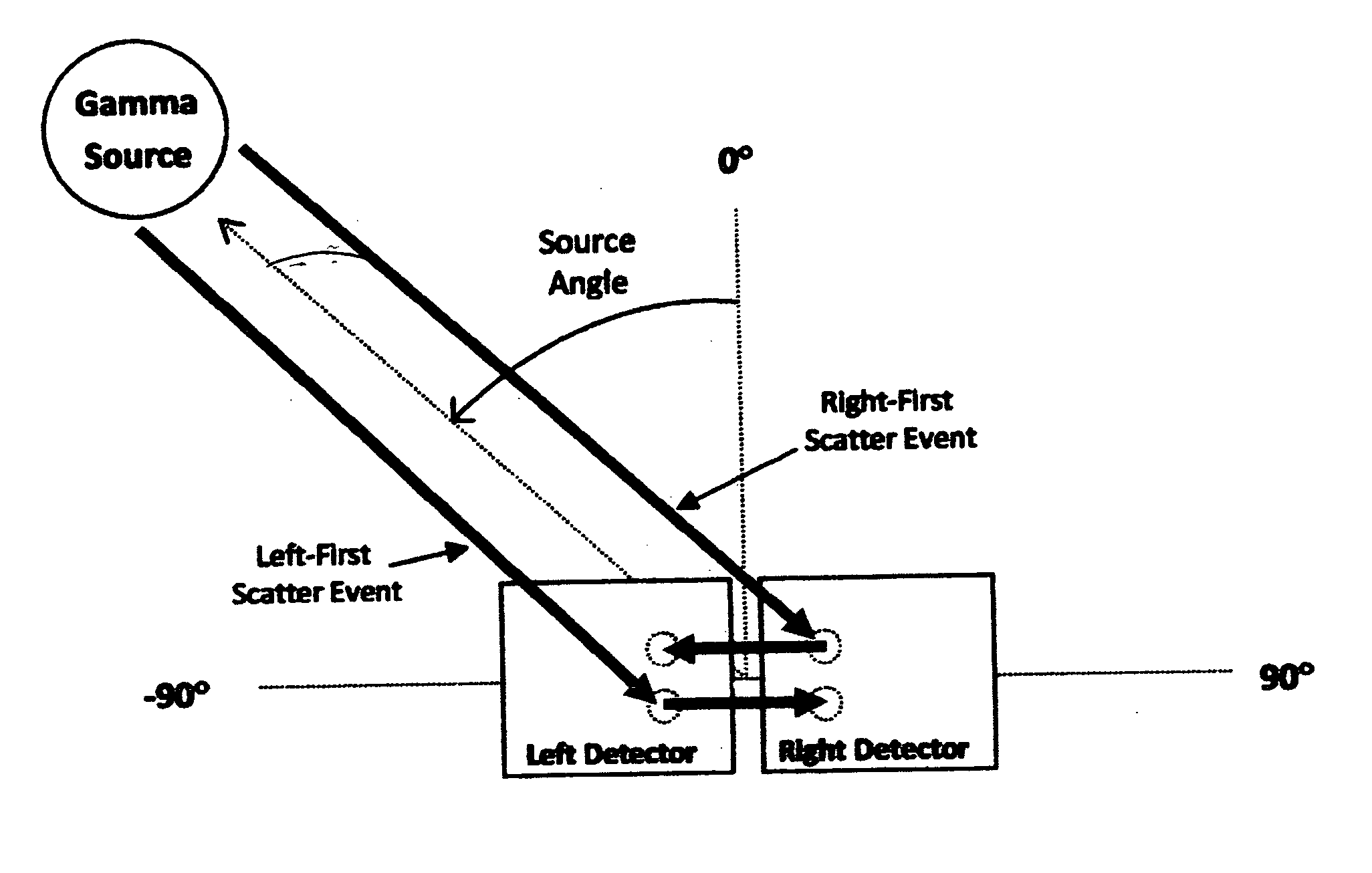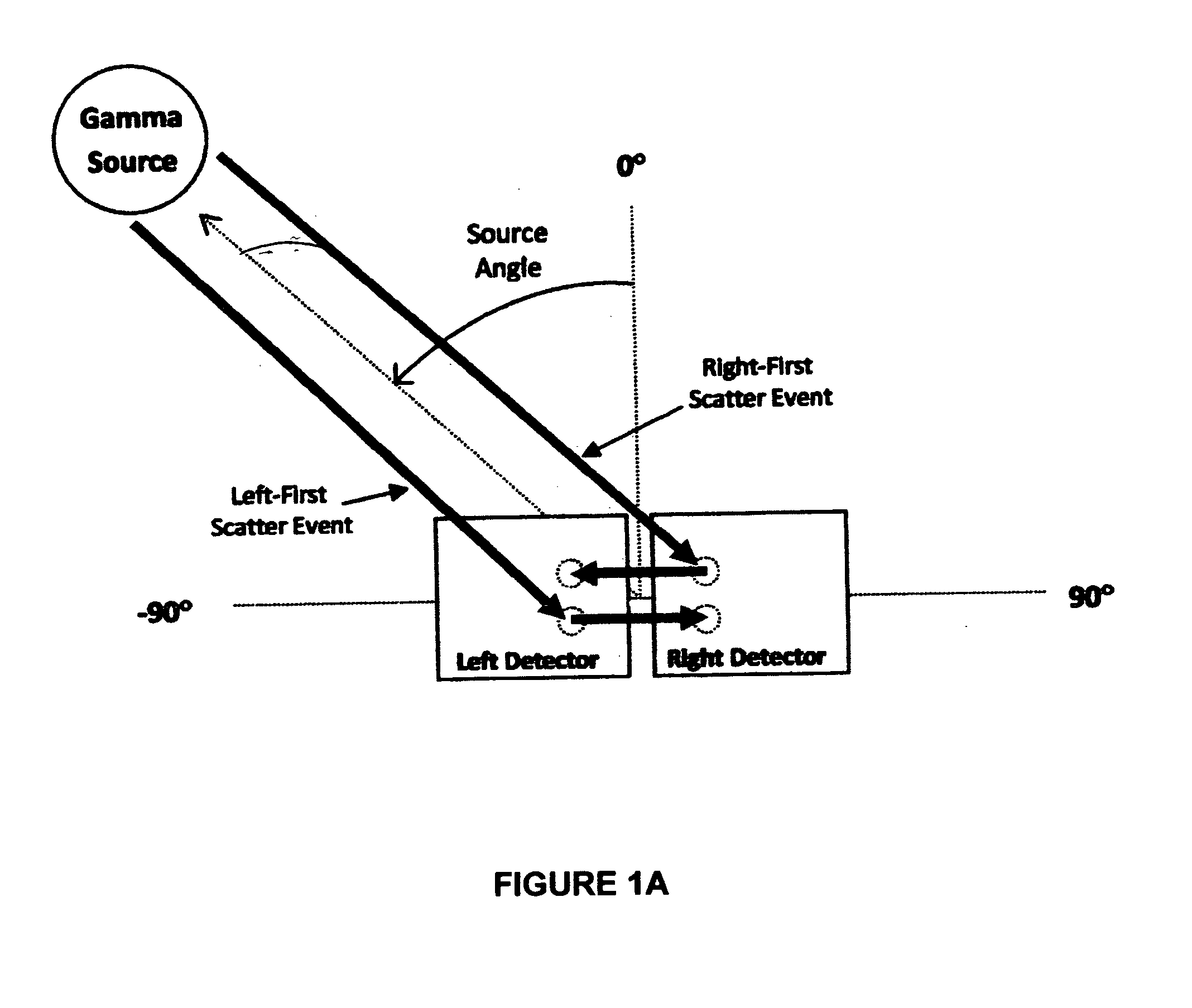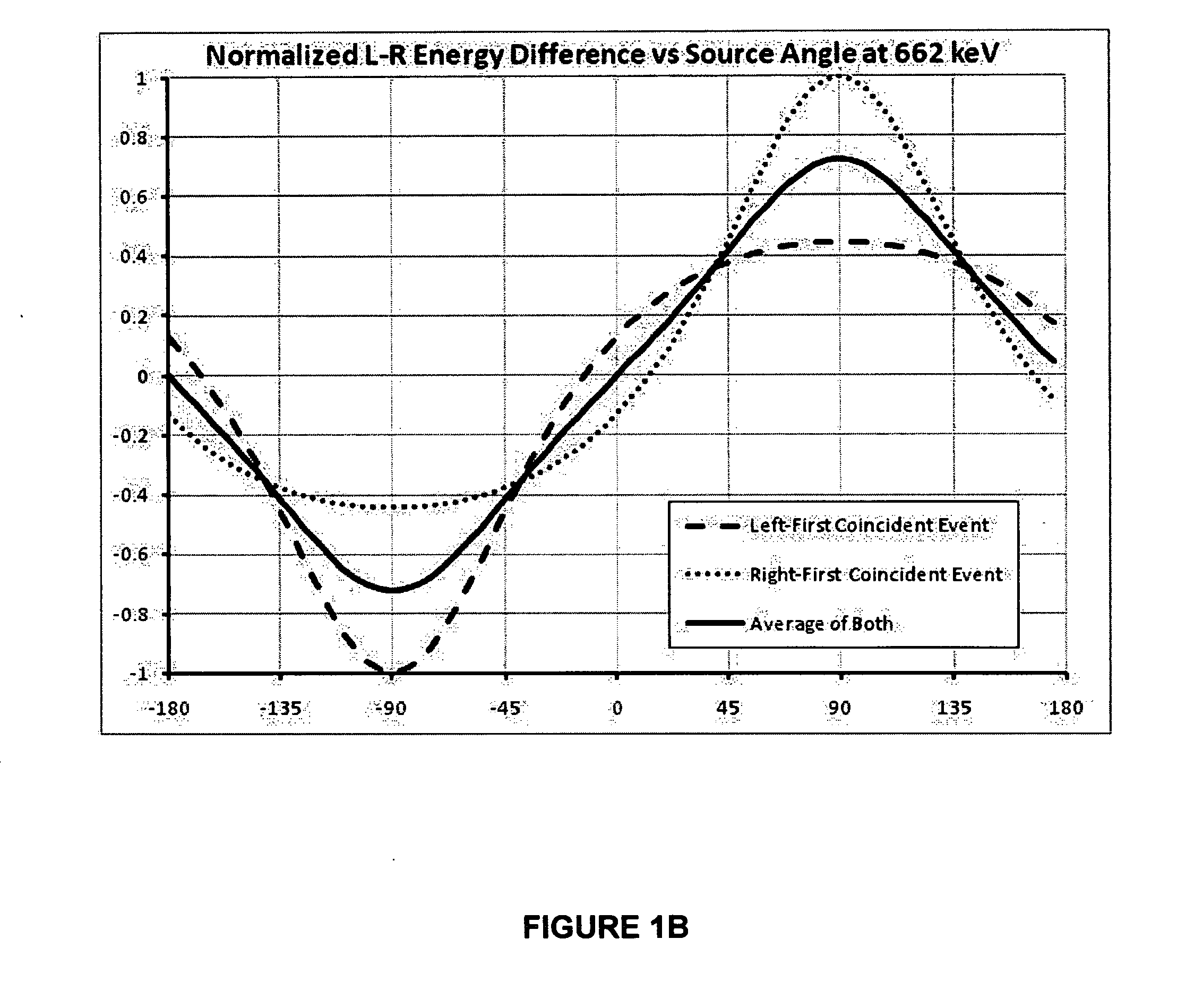Single plane compton camera
a single plane, compton camera technology, applied in the field of apparatus and methods for radiation measurement, can solve the problems of large size of conventional compton camera, cumbersome field use, and expense of detection efficiency, and achieve the effects of simple computational methods, improved detection efficiency, and compact layou
- Summary
- Abstract
- Description
- Claims
- Application Information
AI Technical Summary
Benefits of technology
Problems solved by technology
Method used
Image
Examples
example
[0067]It will be appreciated that medical imaging using PET, CT, or other methods may benefit from utilizing this invention. Current methods using gross counters may neglect absorption events that deposit energies less than some threshold. Using the creation of sum spectra through coincident events occurring in adjacent detectors may reduce the total number of photons necessary for imaging, which will reduce the radiation dose applied to the patient during the imaging procedure.
[0068]Those skilled in the art will appreciate that the invention provides numerous advantages over conventional methods. Some of the advantages include:[0069]1. High intrinsic efficiency for Compton scattering[0070]2. The probability for coupled Compton scattering and photoelectric absorption events between detectors is higher than for separate planes over the entire energy range[0071]3. Field of view is nearly 180° in the X- and Y-directions[0072]4. Low number of counts required to determine the source dire...
PUM
 Login to View More
Login to View More Abstract
Description
Claims
Application Information
 Login to View More
Login to View More - R&D
- Intellectual Property
- Life Sciences
- Materials
- Tech Scout
- Unparalleled Data Quality
- Higher Quality Content
- 60% Fewer Hallucinations
Browse by: Latest US Patents, China's latest patents, Technical Efficacy Thesaurus, Application Domain, Technology Topic, Popular Technical Reports.
© 2025 PatSnap. All rights reserved.Legal|Privacy policy|Modern Slavery Act Transparency Statement|Sitemap|About US| Contact US: help@patsnap.com



